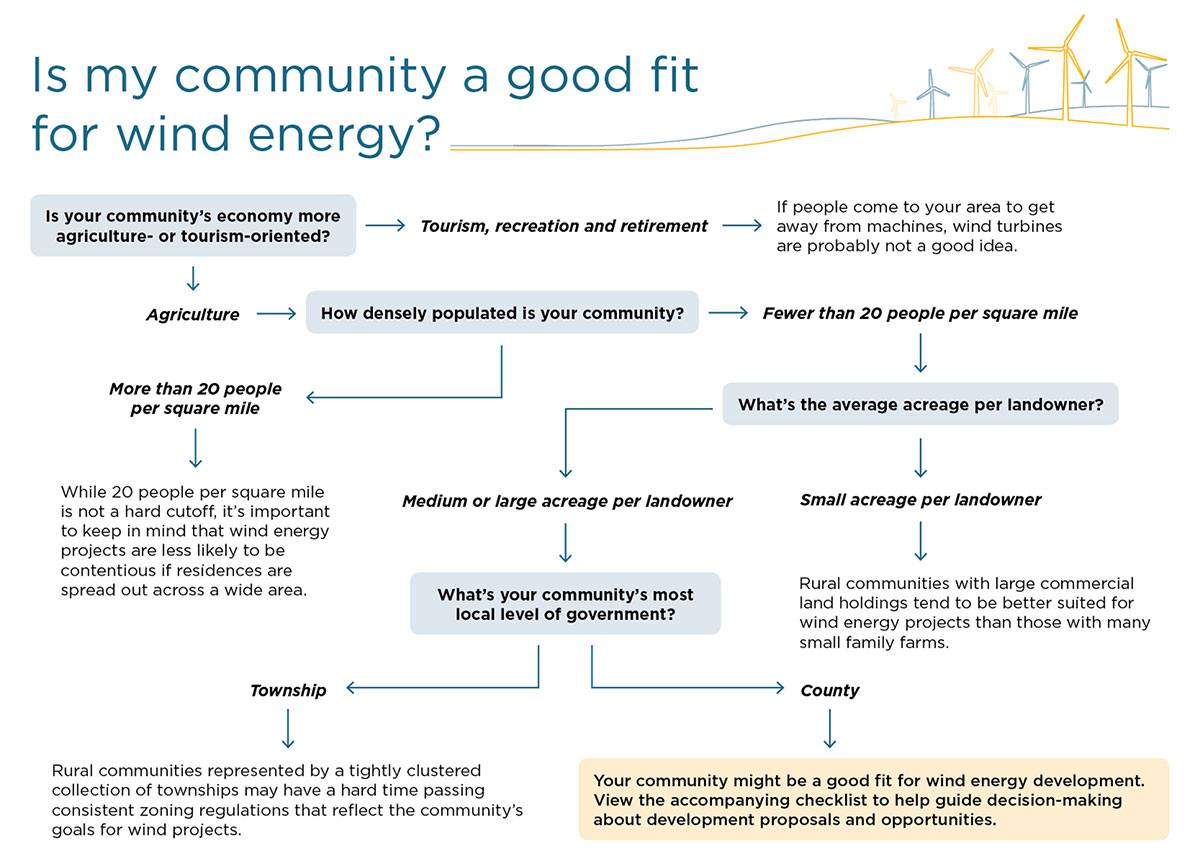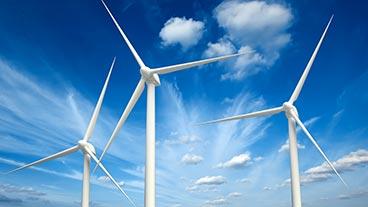The wind energy market is one of the fastest growing sources of renewable energy in the United States. However, because of this fast growth, the comprehensive impact of wind turbine development on rural communities is complex and unmapped.
In response to concerns raised by Missourians about local wind energy development, the University of Missouri has developed a basic resource to help communities evaluate and prepare for wind energy development proposals.
In partnership with MU Extension, students, faculty and leaders from eight schools and departments across campus developed this information. In northwest Missouri communities with commercial wind energy developments, graduate students from the MU Trulaske College of Business conducted:
- face-to-face-meetings
- onsite interviews
- an online survey
The information they gathered and additional research point to initial best practices that communities, governmental entities and individuals can use to weigh local wind energy development options, including:
- Key decision point considerations
- A community engagement checklist

The above image summarizes the detailed content below.
These resources are summarized from a 2018 report, “Wind Energy: Civic Engagement Strategies for Rural Communities,” researched and prepared by Trulaske College of Business MBA students.
Is my community a good fit for wind energy?
This decision-making framework is not a substitute for on-the-ground engagement, nor does it comprehensively address the many issues surrounding wind energy development, i.e. technical, social, environmental, legal and more. Rather, the information can serve as a starting point to encourage further research and thinking that will help local communities work through whether such development is welcome and/or a good fit, as well as any desired development parameters.
Key decision point considerations
Community engagement checklist
Wind energy development is most successful when decisions are made on the community level. Proactive planning and transparent conversations within potentially affected communities are key, whether organized by local government, wind energy development or local landowner interests. Ideally, these conversations occur before a wind energy company proposes a project or contracts with individual landowners. Throughout the process, communities should use relevant tools to craft consistent policies and practices that best serve overall community interests and needs.
